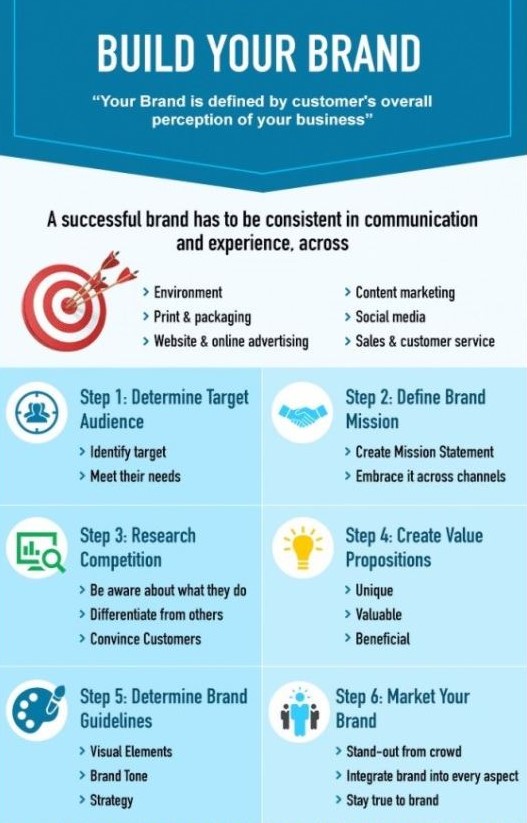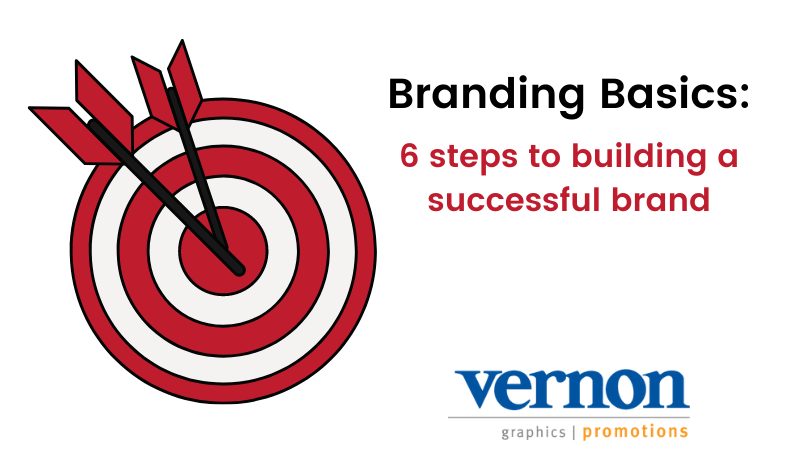Does your business have a solid brand? Do you know what customers and prospective customers think of your company or organization? Do you have a positive brand reputation? If you haven’t given your brand much thought lately, maybe it’s time to give your brand some love and attention. After all, a strong brand helps build customer loyalty and ultimately boosts sales. A good brand is always evolving, helping to define your company’s position in the marketplace. It is important to build a brand that improves your credibility, helps you to acquire more customers, positions you favorably, and boosts your employee morale. Building your brand means increasing your sales and successfully advocating for your product or service. In short, your brand is defined as the overall perception of your business by customers, prospective customers, and employees.
Here are six simple steps to guide you in building a successful brand for your business:

Step 1: Know your target audience
Identify your target audience and understand what they need that you can provide. Decide what type of communication best delivers your message to the audience you are targeting. Whenever possible, know as much demographic information about your audience as possible, like age, interests, and behavior.
Step 2: Define & Articulate Your Mission & Vision
Define the values you want people to know about you and your business. Your vision and mission statements illustrate your purpose. You need to present an authentic representation of what your company strives for and what your corporate values are. Everything from your company logo and tagline to your website and social media accounts should reflect your mission and vision. And to ensure consistency in your messaging, always ask yourself:
- Why did you start your business?
- What are your goals?
- Who is your target audience?
Step 3: Know Your Competition
Analyze your competition and determine what they are offering to their customers. Know how your business is different from your competitors – it may be your marketing strategy, your product selection, your service levels or even your satisfaction guarantee. Whatever puts you in front of the competition should be what you focus on in your branding and marketing efforts.
If you find that your market is filled with a vast number of competitors, try tweaking your branding process with an exclusive communication strategy. Always remember to:
- Be aware about what your competitors are doing
- Differentiate yourself from others
- Enlighten your customers about what makes you better than the competition
Step 4: Create Your Value Proposition
Knowing your value proposition is one of the most important steps in creating a successful brand. Focus on what makes you unique and valuable to find the value proposition that sets your business apart in the marketplace. Include your value proposition in every marketing communication and advertising medium, or consider making it your tagline or slogan. One great example of defining a brand in this way, is Apple, Inc. using the slogan “We do things different.” It is effective because it defines how the company is unique.
Step 5: Determine Brand Guidelines
Brand guidelines define the tone of your brand and set specific rules about promoting the brand. These guidelines are important in helping to maintain consistency across channels and helping make your business more recognizable. Just think, would you recognize the McDonald’s golden arches if they were dark green? A brand guide will help you establish continuity for all your visual elements, including your logo, signage, advertising, online presence, etc.
Step 6: Market Your Brand
Prepare a definite marketing strategy to promote your brand. The key is to apply your branding in every communication piece from packaging and business cards to website design and marketing collateral. And remember that your employees also serve as brand ambassadors. Ensure they are promoting your brand by wearing logoed apparel in-store. The goal is to display your brand in as many places as possible.
It’s important to recognize the valuable role branding plays in the success or failure of a business. Through effective branding, you can establish a strong connection with your customers and create a sense of loyalty that keeps them coming back to you for more.




